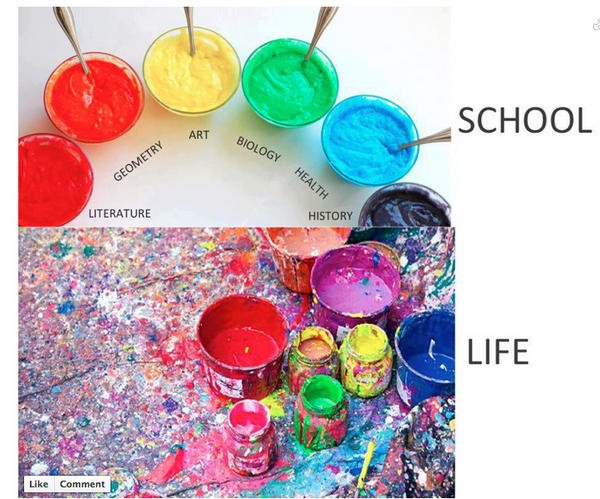New Teaching Rules
by Amy Bowker
December 13, 2014
Whenever you work in a job, there are rules. Teaching of course, is no exception.
When I read these rules for teaching from 1872, I’m so happy that I live now. You had to clean chimneys and couldn’t be married? I wouldn’t have lasted long.
So much has changed in teaching and the world from 1872 to 2014, I thought it was time to create some new rules for teachers.
Collaborate:
There are so many ways to collaborate nowadays. Skype, Twitter, letters, emails, Google Hangout, planning time with other teachers, professional development and voxer. Whether you are technologically inclined or not, there are many ways to collaborate. It allows us to plan better lessons, effectively differentiate our students learning, and try new teaching techniques.
Share:
Share what you are learning, what you are doing in your classrooms, what is working for you and what isn’t. Whether you do this online via Twitter, blogging or just in your staff room. Do it! While I walk down the hall or am on lunch duty, I am constantly noticing neat tricks or cool art projects that I want to try out. We are not working in a one roomed school house anymore. Step outside your classroom and share your ideas and ask other teachers questions about what they are doing in their classroom. Sharing helps us create a sense of working together, and shows that every teacher has successes and failures but sharing them encourage us all to keep on trying.
Less Homework, More Purpose:
We want our students to love learning and school. We need to only send home homework that is purposeful. I don’t believe in sending reading homework home since I want my students to love reading and not make it a chore or work.
Hands On Learning:
Students learn more more when they do and make. Use manipulatives in your classroom no matter what grade you teach. Students need to create, visualize and see what they are learning. They will retain so much more of the learning if you teach with manipulatives.
Photo via: http://www.northlakecollege.edu/student-life/service-learning/PublishingImages/pyramid_large.gif
Real World Lessons:
In the real world, we learn not just about math or reading. Everything is intermingled and we learn it all at once.
Photo via: https://twitter.com/bingbingham/status/260500995312869378/photo/1
Let’s focus on making more integrated lessons that teach many different subjects at once instead of just one at a time. Let’s prepare our students for the real world by using real world problems, not like the one below.
Photo via: http://cdn1.smosh.com/sites/default/files/ftpuploads/bloguploads/1213/smartass-test-answer-diabetes.jpg
Try New Things:
There are so many new ideas, ways of teaching, and technologies to try. Step out of your comfort zone from time to time and try something new. We ask our students to learn something new daily, why shouldn’t we continue to learn too?
Some new ideas, ways of teaching and technology you can try out:
Maker movement
Project based learning
Explain everything app
GAFE
Skype in the classroom
Google hangouts in the classroom
Kidblogs
Taking photos and videos of students learning process
Hour of code
Build Creativity:
Photo via: https://educereoreducare.files.wordpress.com/2013/09/creativity-is2.jpg
We need to let students to use their creativity. The more they use their creativity, the more creative they will be. Our workforce is constantly changing and evolving. Our students will probably be working in jobs that are not even created yet. We need to build their creativity so that they can find a job that they are passionate about. Isn’t that what we all want for our students?
Picture via: https://twitter.com/justintarte/status/543008733971087360/photo/1
As students use technology more, we need to teach them critical thinking skills, character education and digital citizenship. All of these topics can be covered by asking your students more questions. Get them to really dig deep with their reasoning, providing examples, making connections and show their deep understanding of their learning.
Please let me know what you think about these rules. Did I forget to include some? Did I include some that I shouldn’t have? Let me know in the comments below!









